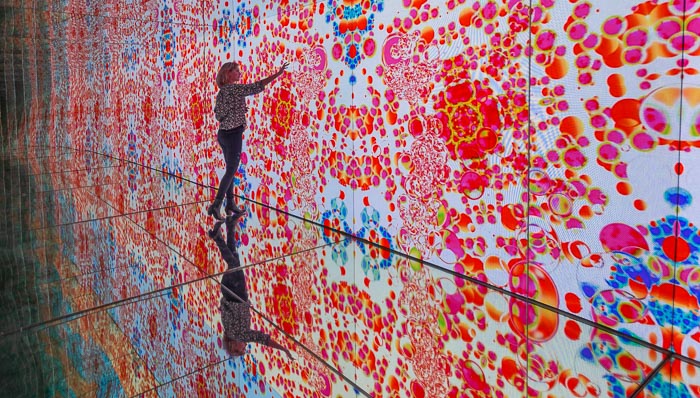If you’re anything like us, then you probably enjoy strolling through art galleries and museums with your friends or family. These places are often filled with beautiful pieces of artwork and fascinating history. But what do you know about cultural institutions? Do you know which facts can surprise even the most well-informed visitors? Read on to learn more!

Museums are illegal under Spanish law
If you visit Spain and visit a museum, prepare for a rude awakening. Because almost absolutely every museum in Spain is illegal, you can visit Spanish museums but you may have to be extra careful about things like your photography and any activities that impact the museum’s security.
Spanish museums are private spaces, and anyone can use their facilities without permission. However, many museums in Spain do offer informal tours to the public. If you want to visit a museum in Spain, you should check the facility’s policies first to make sure you’re allowed to do so. If you’re visiting Spain during the summer, be sure to bring a swimsuit to the beach as well!
The first museum was established in Florence, Italy in 1601.
In Florence, Italy, there was already a rich history of art and culture. To celebrate this, the city established the first public museum. The Museum of San Marco was created as a collection of sculptures, archaeological pieces, and other art. Visitors could see the museum’s collection free of charge, and the museum was meant to be a place to share beauty and knowledge. San Marco is still open to the public today, so you can visit and marvel at this historic museum on your next Italian trip.
Museums have some of the strictest conservation laws in the world.
Museums across the globe must abide by stringent laws when it comes to preserving their collections and artefacts. The Museum Booke describes a museum as “a place where people can learn about the past through objects and by experiencing the environment in which such objects are usually found”.
This means that museums must ensure their collections are in the best possible condition so that visitors can learn from them without distortion. They must also protect the environment from harmful substances, like oil and gas, so that the museum is not harming the natural environment when it is open to the public.
A museum is defined by a code of ethics called the “Museum Booke”.
The Museum Booke is a code of ethics that all museums must follow. It was created in 1979 and is based on the International Council of Museums (ICOM)’s Code of Ethics. It includes guidelines on everything from how visitors should be treated to how artefacts are displayed.
These rules are meant to ensure that museums are safe places for visitors to explore history and culture. The Museum Booke gives museums a guide on how to prevent visitors from getting hurt and also gives curators guidelines on how to tell interesting stories with their collections.
There are more than 70 million museum-goers worldwide every year.
Museum attendance has grown significantly in recent years, with many people opting to visit museums instead of going to theme parks or visiting their favourite sports team’s stadium.
Museums across the globe have become popular attractions. You can visit museums in most major cities, or you can travel to smaller towns where you may not find a museum but you can still explore history and culture. There are museums dedicated to almost every topic or object, so you’re sure to find a museum that appeals to you.
Museums help curators tell stories through collections and objects.
Museums are a great way to understand history and culture more deeply. They often have extensive collections, and some museums like the Museum of Modern Art in New York City also have extensive exhibitions that allow visitors to explore art through a new lens. Museums are also a great way to see items from across history and cultures. Rather than seeing the same objects in every museum, you can compare and contrast them with each other to learn about different cultures and periods.
The internet has changed how museums connect people with history and culture.
Before the internet, museums relied on pamphlets and tours that were only available to visitors. Now, museums have online resources that let visitors explore their collections and share their knowledge with other visitors. The Smithsonian Institution has a data portal that lets you enter information about a certain object, like where it came from or what it was used for.
The Museum of Science in Boston, for example, has an online collection database that you can use to search for a specific item or use an advanced search to find objects by type, origin, or date. Many museums also have social media accounts where you can follow along with their feeds, ask questions, and engage with other visitors.
Museums are not all the same
There are over 18,000 museums in the United States alone. Within this population, there is significant diversity in the types of museums, their operating philosophies, and their aim to serve the community. For example, some museums focus on art while others cover topics such as history, science, and culture.
Not only do these different types of museums serve different audiences, but they also have different costs and membership programs. The best museums for you will be those that address your interests while also serving a wider community. If you are visiting a museum that is focused on art, but you aren’t an art lover, it will be a waste of time and money. Find out what types of exhibitions are at the museum you’re visiting and focus your visit on those exhibitions.
Museums have a storied history
Museums are remarkable places that often cover history. From large museums that cover a wide range of topics, such as the Smithsonian Institution in Washington, DC, to smaller museums that focus on a single topic such as a local history museum, museums provide visitors with a wealth of information.
Museums also provide a means to showcase artwork that has historical significance. The history museums provide is often a chronological timeline of major events such as wars and other major occurrences in history. These museums also often have interactive features that allow visitors to explore these events and other historical information in a hands-on way.
Museums engage people of all ages
Museums are incredible places to learn, explore art and history, and develop critical thinking skills. Many museums are also committed to providing volunteers with training and experience in engaging visitors in meaningful ways. Museums offer a variety of activities to engage visitors of all ages.
Many museums offer programs for kids, as well as family-friendly activities for adults. Additionally, museums often host events for the community, such as museums for adults programs that offer classes, lectures, and other events for adults to engage with their community.
Museums promote learning and cultural awareness
Museums are more than places to explore art and history. They are places to promote cultural awareness. Many museums are committed to teaching visitors about issues facing the community, such as history, issues of social justice, and the environment. There are a variety of ways that museums can promote cultural awareness, including hosting events, offering educational programs, and showcasing artwork that promotes values such as equality, respect, and diversity.





